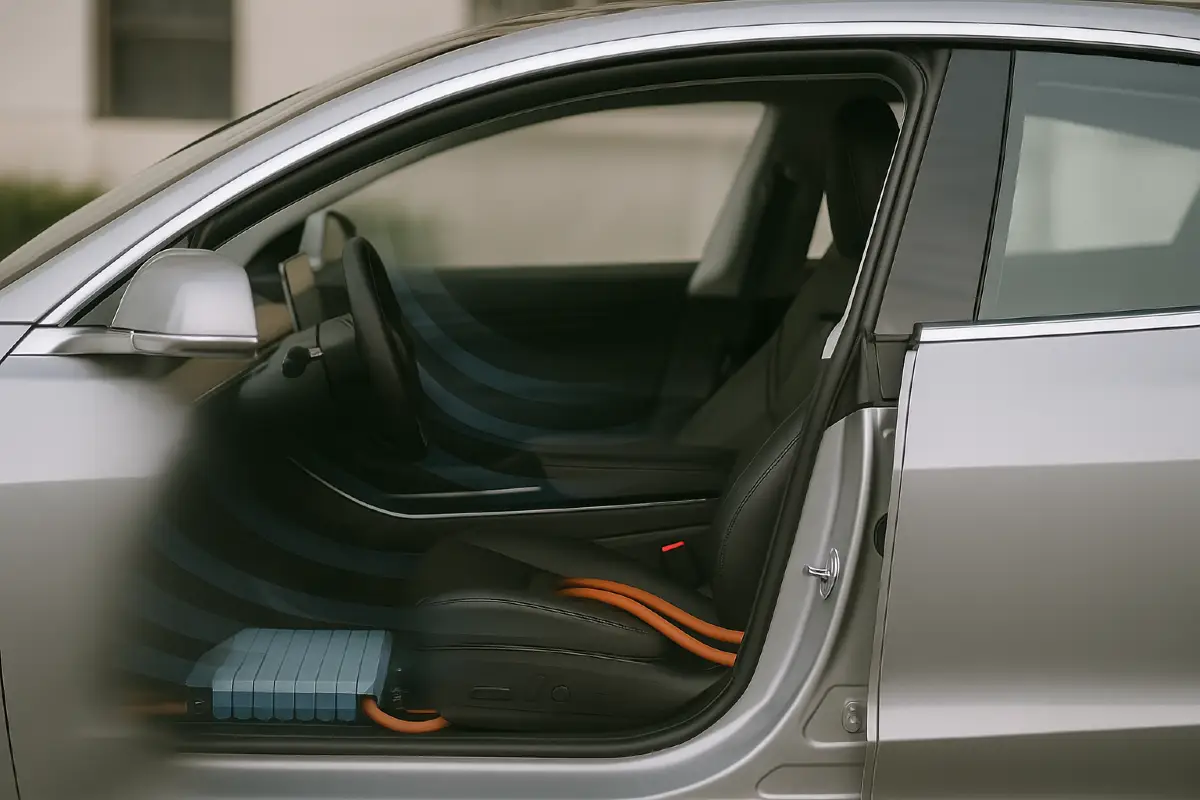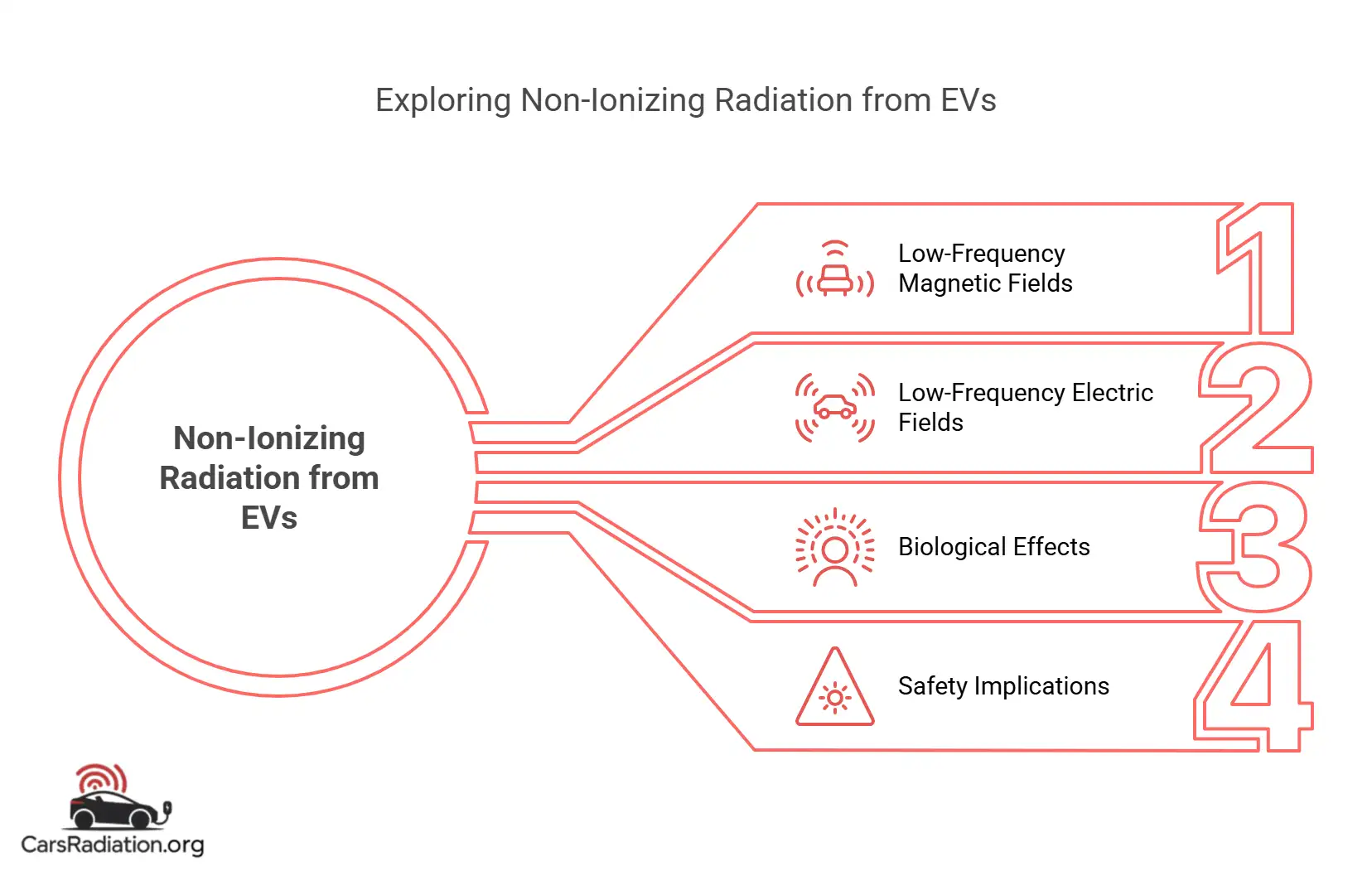Do Electric Vehicles Produce Ionizing or Non-ionizing Radiation?

Electric vehicles (EVs) do not produce ionizing radiation. Instead, they emit non-ionizing electromagnetic radiation, primarily in the form of low-frequency magnetic and electric fields during operation and charging. Unlike ionizing radiation, which has enough energy to remove tightly bound electrons from atoms and potentially cause DNA damage, non-ionizing radiation lacks the photon energy required to induce ionization. However, the absence of ionization does not imply safety.
A growing body of research has identified correlations between chronic exposure to low-frequency non-ionizing fields and a range of biological effects. The implication is clear: non-ionizing radiation, while different in mechanism, should not be assumed benign solely on the basis of its non-ionizing classification.
What Kind of Radiation Do EVs Emit?
Electric and hybrid vehicles emit a mix of:
- Static magnetic fields (from DC battery currents)
- Extremely low-frequency (ELF) magnetic fields (0–300 Hz, often from AC currents in power electronics and motors)
- Radiofrequency (RF) fields (from wireless communications, Bluetooth, Wi-Fi)
These exposures vary based on the car’s design, the position of components (especially batteries and inverters), and driving or charging conditions.

The Bigger Issue: Chronic Exposure to Non-Ionizing Radiation
The more pressing concern isn’t about acute exposure or high levels that might exceed regulatory thresholds. It’s about chronic, low-level exposure to non-ionizing electromagnetic fields (EMFs), particularly from ELF sources inside vehicles.
Several studies have raised concerns:
- Cumulative exposure: As passengers (especially frequent users like professional drivers or commuters) spend long hours in electric or hybrid vehicles, the body is continually exposed to ELF magnetic fields. A study using lab animals demonstrated changes in blood immune markers after repeated exposure, suggesting potential biological impacts over time.
- Potential health effects: According to the BioInitiative Report, long-term exposure to low-level EMFs has been linked to effects on gene expression, oxidative stress, neurological changes, and even increased cancer risk in some studies. These effects are considered non-thermal, meaning they occur without heating tissue, challenging traditional assumptions about safety.
- Children and vulnerable populations may be more sensitive to EMF exposure, especially when seated near battery compartments or power electronics in the car’s floor or rear seats.
Scientific and Regulatory Perspectives
Although international guidelines (like those from ICNIRP or IEEE) mainly focus on short-term, high-intensity exposure limits, there is growing recognition that chronic exposure, even at low levels, deserves more scrutiny:
- The WHO has acknowledged that ELF magnetic fields are “possibly carcinogenic to humans” (Group 2B classification by IARC).
- The precautionary principle is being increasingly recommended, especially in vehicle design and urban planning, to reduce unnecessary EMF exposure even if direct causal links aren’t yet fully proven.
While electric vehicles don’t emit dangerous ionizing radiation, the non-ionizing radiation they do emit isn’t entirely risk-free, especially when considering non-thermal and cumulative effects. The health concerns are not about immediate damage, but about long-term exposure to low-frequency electromagnetic fields, which science suggests may affect biological systems in subtle but significant ways. This makes EMF mitigation in EV design and public awareness an important topic moving forward.

